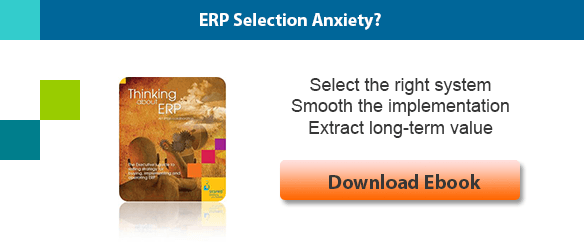Isn’t it interesting how people give route directions differently, each believing to get the listener to his rightful destination in his own way? So often they start off with: “You know where XYZ café is? Well, from there take ….” Others may draw a crude sketch, showing the number of traffic lights you need to cross before turning left; but always adding “I think” before continuing. Still others take a map book, open it on the right page … and before providing directions, turn the book to face true north!
The travel savvy enquirer mostly stops listening and asks for the street address. He knows that his trusted GPS will get him to his destination in no time without counting traffic lights, memorizing upside down street maps or figuring out the assumptions (mostly wrong!) of confused co-travelers.
How is this different from the ‘routes’ companies take to get to their business destinations? Divisions are often free to implement their own systems, processes and software applications to achieve their individual objectives. Instead of a streamlined operation with company-wide access to business critical information, these organizations often evolve into tangled conglomerations of incompatible systems. The resulting inefficiencies often even lead to the demise of the enterprise.
Organic growth may well stimulate the innovative thinker, but left unheeded it can cause chaos in systems and business strategies, much like driving in dense fog without clear directions or the help of a GPS.
At some point, a systematic evaluation of how the business operates, and its information needs, is required to properly strategize its route into a prosperous future. That is provided by Enterprise Architecture (EA).
Enterprise architecture is a comprehensive conceptual framework that assists organizations to understand their own structures and processes — and how they work, ensuring that all assets — business processes, information technology (hardware and software), networks, people, information databases and operations — are aligned to support the overall business strategy.
A reliable and valid EA considers four supporting pillars, each contributing an essential element to the overall model:
- The Business Architecture: how the business works, including its overall strategy to achieve objectives. This includes its structure, functional business units and processes, and how these interact.
- The Information Architecture: what the organization needs to know to run its business processes and operations, including data models; data management policies and databases that serve all its users. It cannot allow independent silos of data to exist within the enterprise. It is the very purpose of the EA to develop one common, shared, valid, reliable and consistent data resource.
- The Application (Process) Architecture: defines the enterprise’s application portfolio and links the information and business architectures to selected applications that will best serve its users with their individual skills in their different job functions. This architecture should also provide for information storage and retrieval and for the development of new applications based on the enterprise’s needs, policies and technology platforms.
- The Technology Architecture: defines the hardware and software supporting the organization and providing the technology platforms that link the application, business and data architectures to offer user-friendly solutions to the various users in their respective work stations.
Because EA is based on an enterprise’s full architecture on all levels, it becomes a powerful single source of truth. At SYSPRO, we offer a collaborative tool called SYSPRO Process Modeling (or SPM) that aligns all entities in an organization via a visual representation of standard and unique processes and measures. Enterprise Architecture is a business’s GPS. It’s an important guide, showing you where you are at any moment in time, signposting the direction you need to travel in and, ultimately, leading you towards your business objectives.







